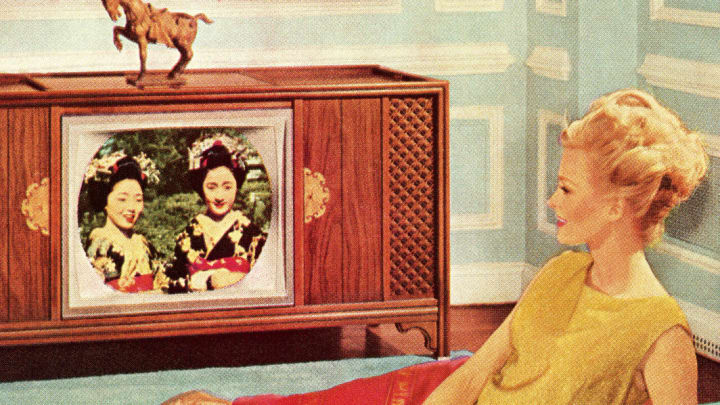A century ago, it wasn't unusual to have at least one dangerously radioactive object in your home. Radium was used to make a long list of everyday items—including toys, chocolate, watches, and cosmetics—before the risks were understood. By the 1950s and '60s, it was common knowledge that radioactive materials weren't something you wanted to be exposed to on a daily basis, and manufacturers (for the most part) were no longer adding them to their goods on purpose. But radiation did inadvertently show up in one of the hottest products of the age, and it was pumped into thousands of living rooms across America before the mistake was caught.
Testing in 1967 revealed that large-screen models of GE color televisions sets were emitting radiation that exceeded safe levels, according to a recent story by The Atlantic. After further investigation it was clear that the problem wasn't limited to GE: Radiation was detected in color models made by nearly every television company at the time, which meant as many as 112,000 sets were radioactive.
The radiation was thought to be linked to the high voltage required to power early color televisions, and according to health officials, it was about 10 to 100,000 times higher than the acceptable rate. In light of the alarming information, the surgeon general released a statement assuring consumers that the radiation levels likely weren't strong enough to hurt them—but there was a catch. Radiation escaped the television at a crescent-shaped angle that sloped downwards, meaning that people were relatively safe when they watched their sets at least six feet away from the screen. But viewers who preferred laying on the carpet beneath their set, or who put it on a high shelf, may have been placing themselves directly in the path of the radiation leakage.
It's unclear what long-term health effects radioactive color TVs had on their owners—if any—but they definitely left an impact on our collective psyche. Even today, kids are lectured for sitting too close to the television set, and though the reasons parents give vary ("it rots your brain," "it'll hurt your eyesight"), their concern may have roots in the radiation scare of the late 1960s.
In 1968, Congress passed the Radiation Control for Health and Safety Act, which enabled the FDA to regulate radiation emissions in electronics. Television manufacturers made color sets safer by installing glass plates to block excess radiation, and radioactive TVs soon disappeared from stores.
The FDA still regulates radiation in electronics today, and as the technology evolved, the chances of getting a harmful X-ray blast from your television set have greatly diminished. That means the hazards of binge watching are mostly limited to eye strain, myopia, and the usual risks that come with sitting still all day.
[h/t The Atlantic]
